Choosing the Right Cable Tie Materials Suitable for Oil and Gas Industries
August 1, 2025

Are you choosing the right cable tie material that can withstand the extreme demands of the oil and gas industry? In this sector, every component, no matter how small, plays a crucial role in keeping operations running smoothly.
From offshore platforms to high-heat onshore fields, the conditions are harsh and unforgiving. Cable ties, often overlooked, are essential in organizing cables and ensuring safety in these demanding environments. But choosing the wrong material could lead to failures, downtime, and safety risks.
The challenge lies in finding cable ties that can handle exposure to extreme temperatures, corrosive chemicals, and constant vibrations. Standard materials may not withstand the stress of oil, gas, and heat, compromising their ability to securely fasten cables.
This blog will guide you through the best cable tie materials suitable for oil and gas applications, explaining how different materials respond to harsh environments and which ones offer the durability you need. We’ll show you how to make the right choice for your operations and keep your critical systems secure and running.
The Unique Challenges of the Oil and Gas Industry
The oil and gas industry is known for its harsh environments, where extreme conditions continuously challenge the durability and reliability of equipment. Cable ties in such settings must endure exposure to high temperatures, corrosive chemicals, constant vibrations, and severe weather. Even the smallest weaknesses in cable ties can lead to system failures, disruptions, and costly repairs.
Here are some key challenges that cable ties face in these environments:
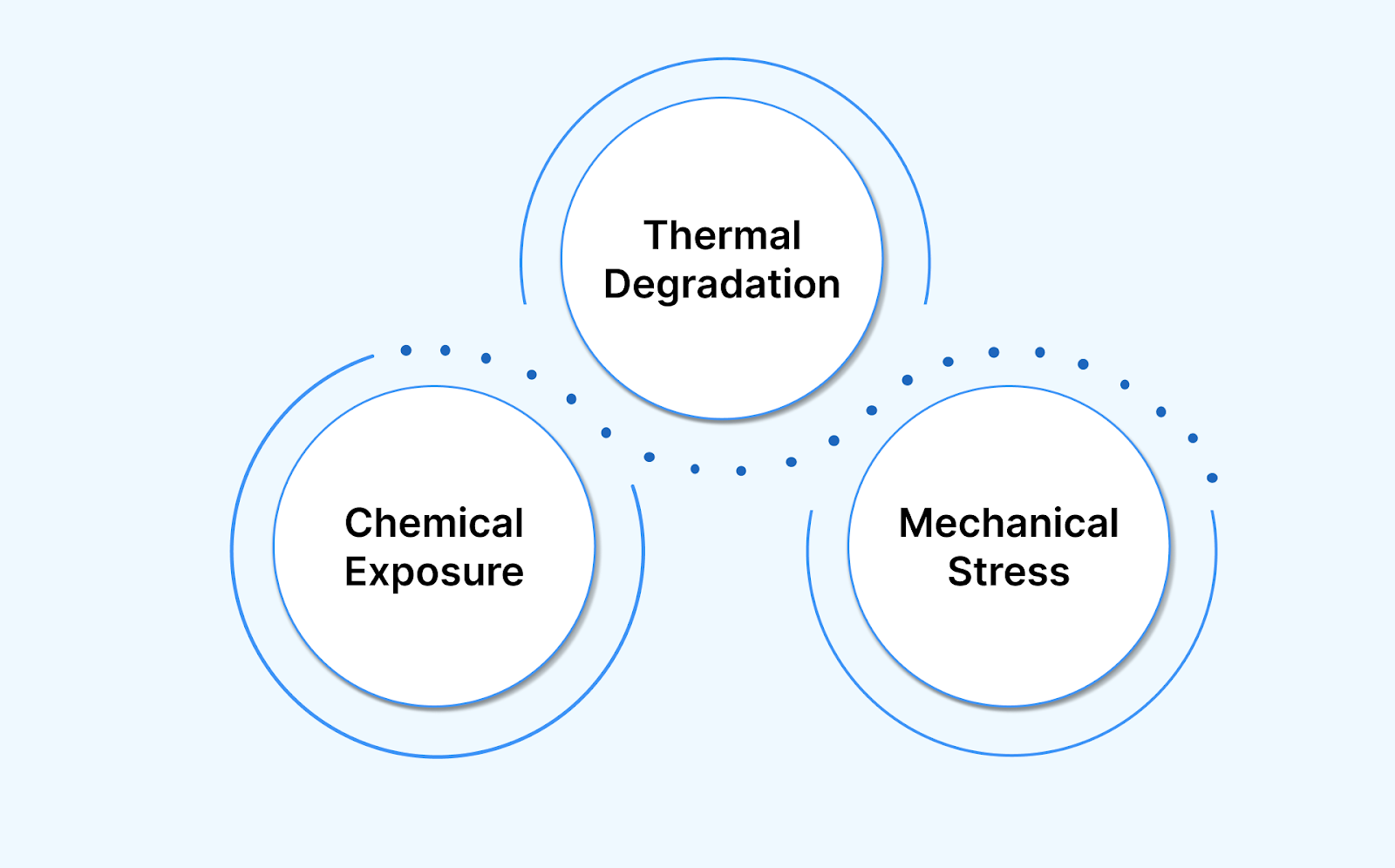
- High temperatures and corrosive chemicals degrade materials, reducing the cable ties’ ability to secure cables.
- Oils, greases, and petroleum-based substances can cause materials to soften, swell, or become brittle.
- Mechanical stresses and constant movement of machinery increase the risk of failure.
These factors make choosing the right cable tie material critical for ensuring long-term performance and safety. Next, let’s look at how oil exposure can weaken or damage cable ties in these environments.
How Oil Exposure Affects Cable Ties
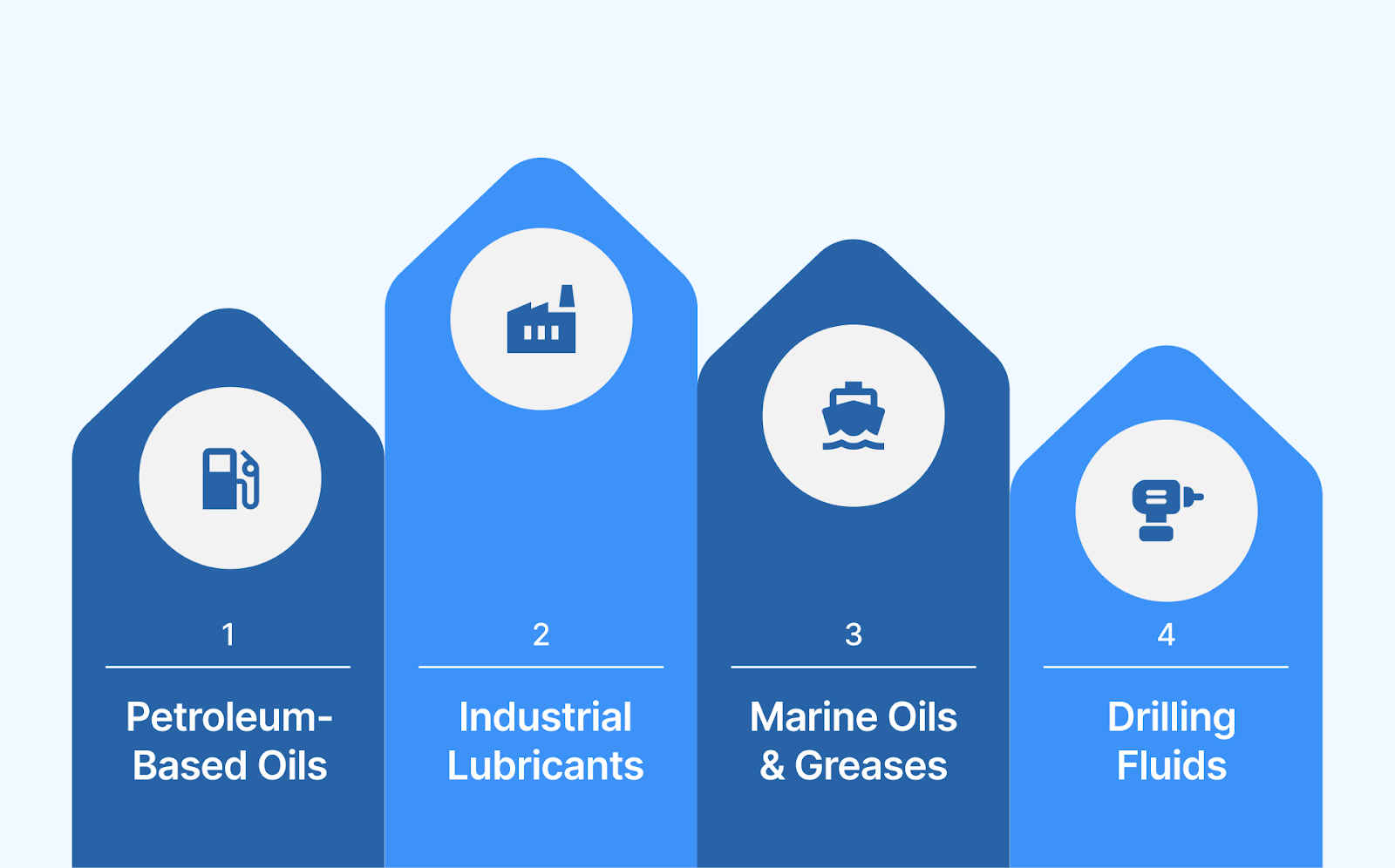
Oil exposure can significantly compromise the integrity of cable ties, especially in the high-demand environments of the oil and gas industry. The effect varies depending on the type of oil.
Below are the primary oils that impact cable ties in the oil and gas sector:
- Petroleum-Based Oils: Common in the oil and gas industry, motor oils, transmission fluids, and hydraulic oils can soften and degrade standard cable ties, reducing their tensile strength and their ability to hold cables and components in place securely.
- Industrial Lubricants: Cutting oils and metalworking fluids used in processing plants and machinery can gradually weaken cable ties, especially under high-temperature and high-vibration conditions.
- Marine Oils and Greases: Offshore oil and gas operations face the added challenge of marine-grade greases, which can break down cable ties over time, particularly when combined with the corrosive effects of saltwater.
- Drilling Fluids: Specialized oils used in drilling operations can also degrade the material of cable ties, weakening their structure and causing them to fail under pressure.
Furthermore, the reduced grip caused by the oil coating can make securing cables difficult, creating safety risks in environments that rely on stability and reliability.
These oils interact with cable ties in distinct ways, making it essential to choose materials that can withstand these harsh conditions. But like oils, gases also affect cable ties. Let’s discuss how.
How Gas Exposure Affects Cable Ties

Similar to oil exposure, gases in the oil and gas industry can also take a toll on cable ties, impacting their durability and performance. The variety of gases present, ranging from natural gas to hydrogen sulfide, can gradually degrade the material properties of cable ties, affecting their ability to perform reliably in demanding environments.
Here’s how gas exposure impacts cable ties:
- Loss of Flexibility: Continuous exposure to certain gases can reduce elasticity, making ties more prone to cracking and snapping.
- Corrosion Risks: For metal cable ties, gases like hydrogen sulfide accelerate corrosion, which can severely limit their lifespan and effectiveness.
- Reduced Grip: Gas exposure may also weaken the cable tie’s ability to maintain tension, compromising the security of bundled cables.
Let’s now move on to explore which materials offer the best protection against gas exposure in these environments.
Also read: How Long Do Cable Ties Last Outside? A Comprehensive Guide
Exploring Different Cable Tie Materials Suitable for Oil and Gas Applications
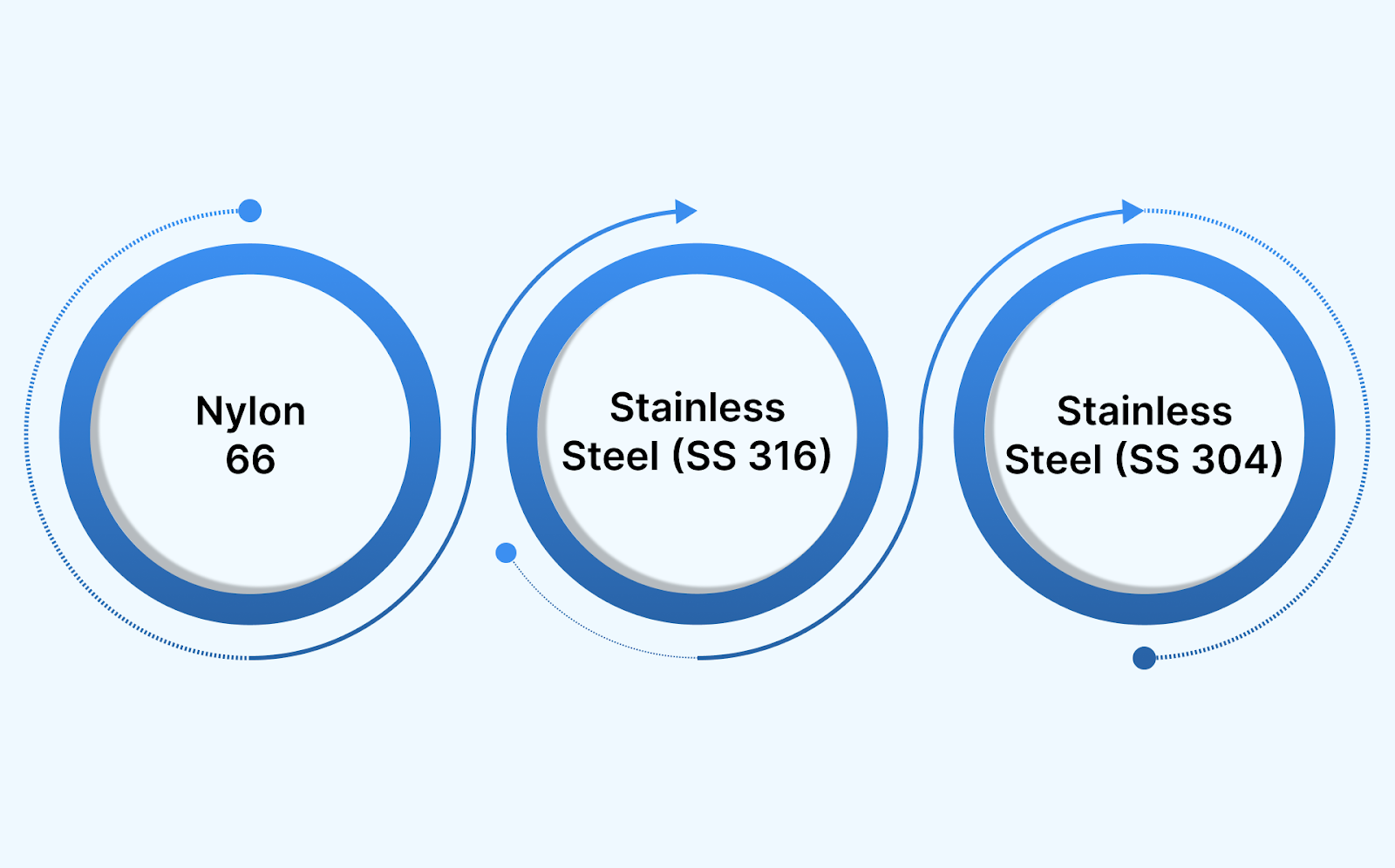
When it comes to oil and gas environments, selecting the right cable tie material is crucial for ensuring long-lasting durability and reliability. Each material has its own strengths and weaknesses when exposed to oils, chemicals, and high temperatures. Let’s explore three commonly used for cable tie materials suitable for oil and gas conditions:
1. Nylon 66
Nylon 66 is a versatile thermoplastic polymer known for its high strength, excellent wear resistance, and durability. It’s commonly used in a wide range of applications, from automotive to industrial cable management.
Oil Resistance:
- Moderate
Applications:
- General-purpose cable bundling in various industries.
- Cable management in non-extreme environments.
- Suitable for low to moderate oil exposure areas.
Limitations:
- Absorbs oils over time, leading to softening and weakening.
- It can lose tensile strength when exposed to certain oils.
2. Stainless Steel (SS 316)
Stainless Steel 316 is an alloy known for its superior resistance to corrosion, particularly in harsh, industrial, and marine environments. It provides exceptional strength and durability under extreme conditions.
Oil Resistance:
- Excellent
Applications:
- Ideal for high-temperature, high-tensile applications.
- Frequently used in offshore oil rigs, drilling platforms, and other corrosive environments.
- Perfect for bundling cables in chemical plants or facilities dealing with petroleum-based substances.
Limitations:
- Higher cost compared to nylon alternatives.
- Requires more installation time due to the strength and rigidity of the material.
3. Stainless Steel (SS 304)
Stainless Steel 304 is similar to SS 316 but offers slightly lower corrosion resistance. It is still highly durable and effective in many harsh industrial environments. It’s ideal for applications where corrosion resistance and high tensile strength are critical.
Oil Resistance:
- Excellent
Applications:
- Used extensively in refineries, chemical plants, and in industries with high mechanical stress.
- Suitable for bundling cables in extreme environments, such as high heat and chemical exposure areas.
- Ideal for use in environments exposed to oils, greases, and other petroleum products.
Limitations:
- Slightly more expensive than Nylon 66.
- Requires specialized tools and techniques for installation due to its rigidity.
Each of these materials offers unique properties for cable ties, with Stainless Steel SS 316 and SS 304 being the best choices for oil and gas environments due to their excellent resistance to oils and extreme conditions.
With the right materials in mind, it’s time to take a look at the top cable tie types suited for the oil and gas industry.
Top Cable Tie Types for the Oil and Gas Industry
Cable ties come in various types, each made from different materials designed to withstand the harsh conditions of the oil and gas industry. In this section, we’ll highlight the top cable tie types that are engineered to meet these demanding challenges, offering durability and reliability when it matters most.
Surelock’s range of high-performance cable ties is designed to withstand extreme conditions and deliver unmatched durability. Explore our superior solutions today and ensure your operations stay secure, efficient, and compliant.
Having identified the best cable tie types, let's move on to how to select the most suitable ones for your needs.
How to Select the Best Cable Ties for the Oil and Gas Industry
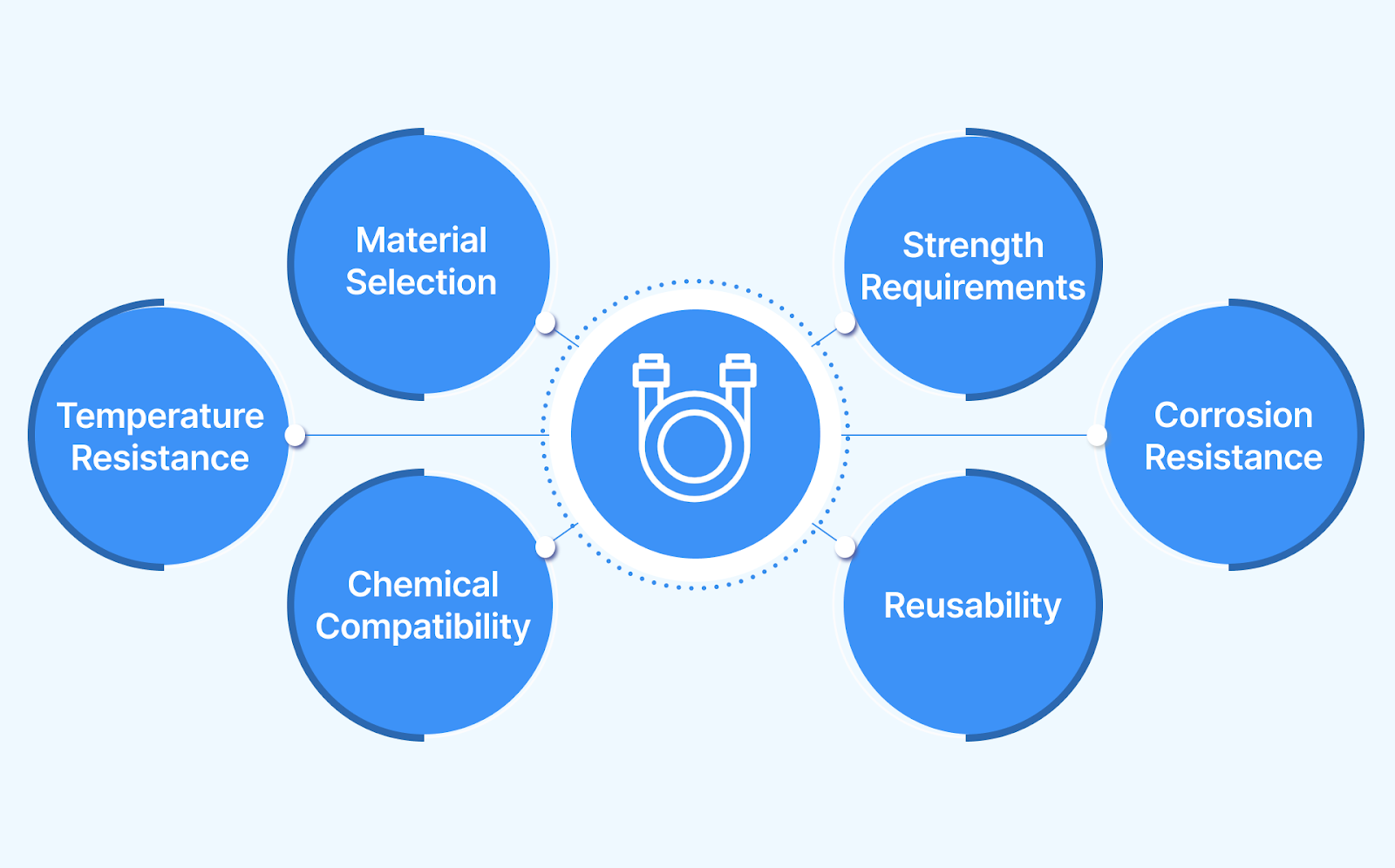
When working in oil-heavy environments, selecting the right cable tie is crucial to ensure the safety, longevity, and reliability of your systems. To help you make the right choice, here are some key factors to consider when selecting cable ties for oil resistance:
- Material Selection: Choose materials with high oil resistance, such as stainless steel, which offers superior durability in oil-rich environments.
- Temperature Resistance: Ensure the cable tie can withstand your environment's temperature range. High heat can accelerate the degradation of certain materials.
- Chemical Compatibility: Assess the specific oils in your environment and choose cable ties made from materials that are resistant to those chemicals.
- Strength Requirements: Consider the tensile strength needed for the job. In high-stress environments, stainless steel or high-performance nylon may be necessary for added durability.
- Corrosion Resistance: For environments exposed to seawater or chemicals, opt for stainless steel or coated steel ties, which offer enhanced corrosion resistance.
- Reusability: If frequent adjustments are needed, consider reusable cable ties that can be easily reused without compromising their strength.
By considering these factors, you can ensure that the selected cable tie will perform effectively, even in challenging oil and gas environments.
Now that you know what to look for, let’s discuss how to properly use and maintain your cable ties in these challenging environments.
How to Properly Use and Maintain Cable Ties for Oil & Gas Environments?
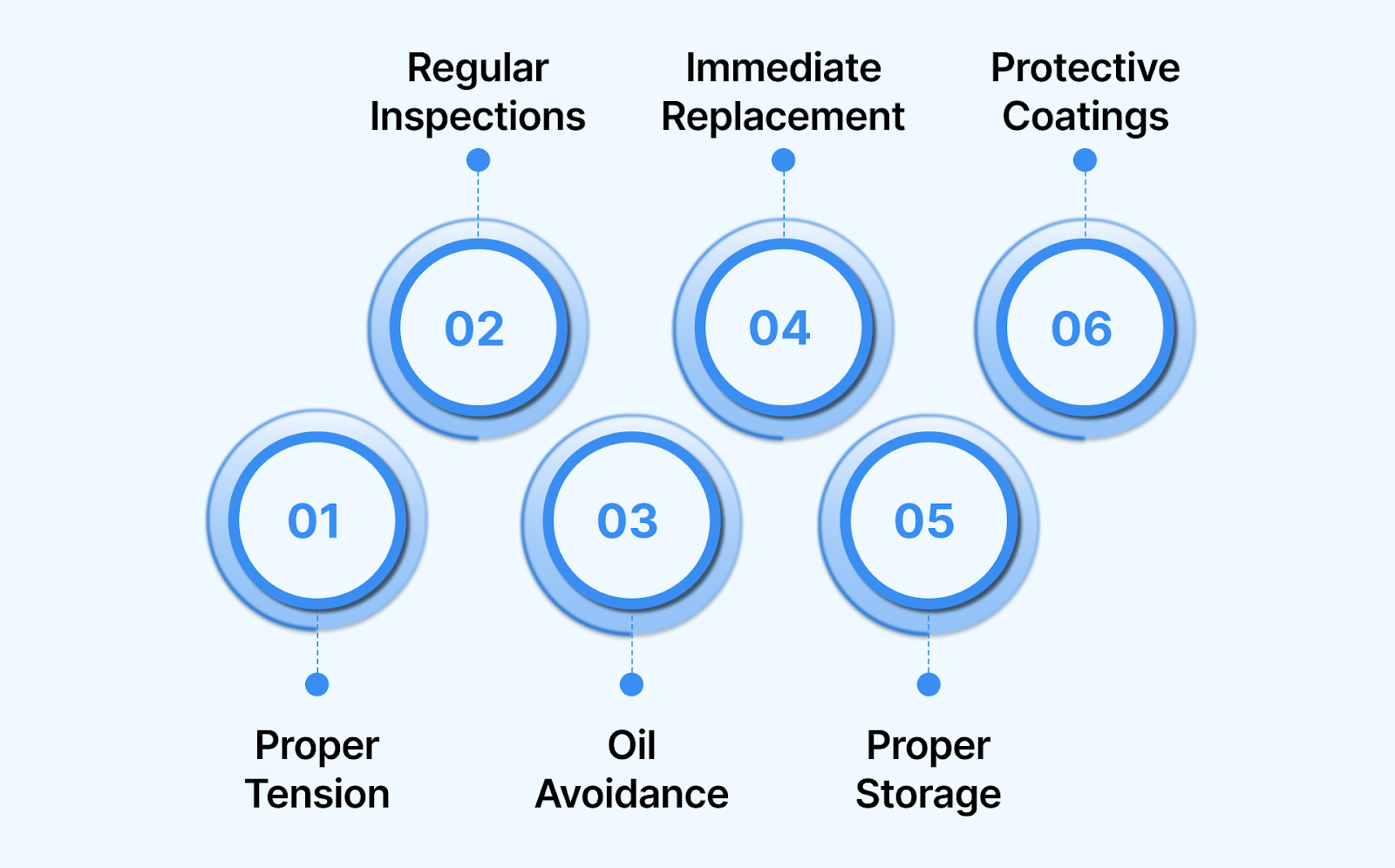
Given the extreme environmental conditions of the oil and gas industry, proper usage and maintenance of cable ties are vital to prevent failures that could result in costly downtimes or safety hazards. Here's how to maximize the performance and lifespan of your cable ties in oil and gas environments:
- Ensure Proper Tension: When installing cable ties, ensure they are tightened to the appropriate level to prevent slippage without over-tightening, which could cause breakage.
- Regular Inspections: Frequently check for signs of wear, such as softening, brittleness, or discoloration, especially in high-risk areas.
- Avoid Direct Oil Contact: Whenever possible, use cable tie mounts to keep ties elevated above surfaces that may be exposed to oils and other corrosive substances.
- Replace Degraded Ties Immediately: If any tie shows visible damage, replace it promptly to maintain the integrity of the cable management system.
- Store Ties Properly: Before installation, keep cable ties in a dry, cool environment to prevent premature aging or damage.
- Use Protective Coatings: If using metal cable ties, opt for coated options to offer extra protection against the harsh conditions in oil and gas environments.
Following these tips ensures your cable ties will perform effectively and last longer, even in the demanding oil and gas industry.
Conclusion
In the oil and gas industry, choosing the right cable tie material is crucial to ensure safety, reliability, and long-term performance under challenging conditions. From oil resistance to temperature tolerance, selecting the appropriate material can make all the difference in maintaining the integrity of your operations.
Surelock offers a diverse range of high-quality cable ties specifically designed to meet the extreme demands of the oil and gas sector. Whether it's our durable Stainless Steel Ties for corrosive environments, Fire Retardant Cable Ties for safety-critical areas, or Reusable Steel Ties for long-lasting performance, Surelock delivers the reliability you need.
Get in touch today to find the ideal solution for your oil and gas projects.



